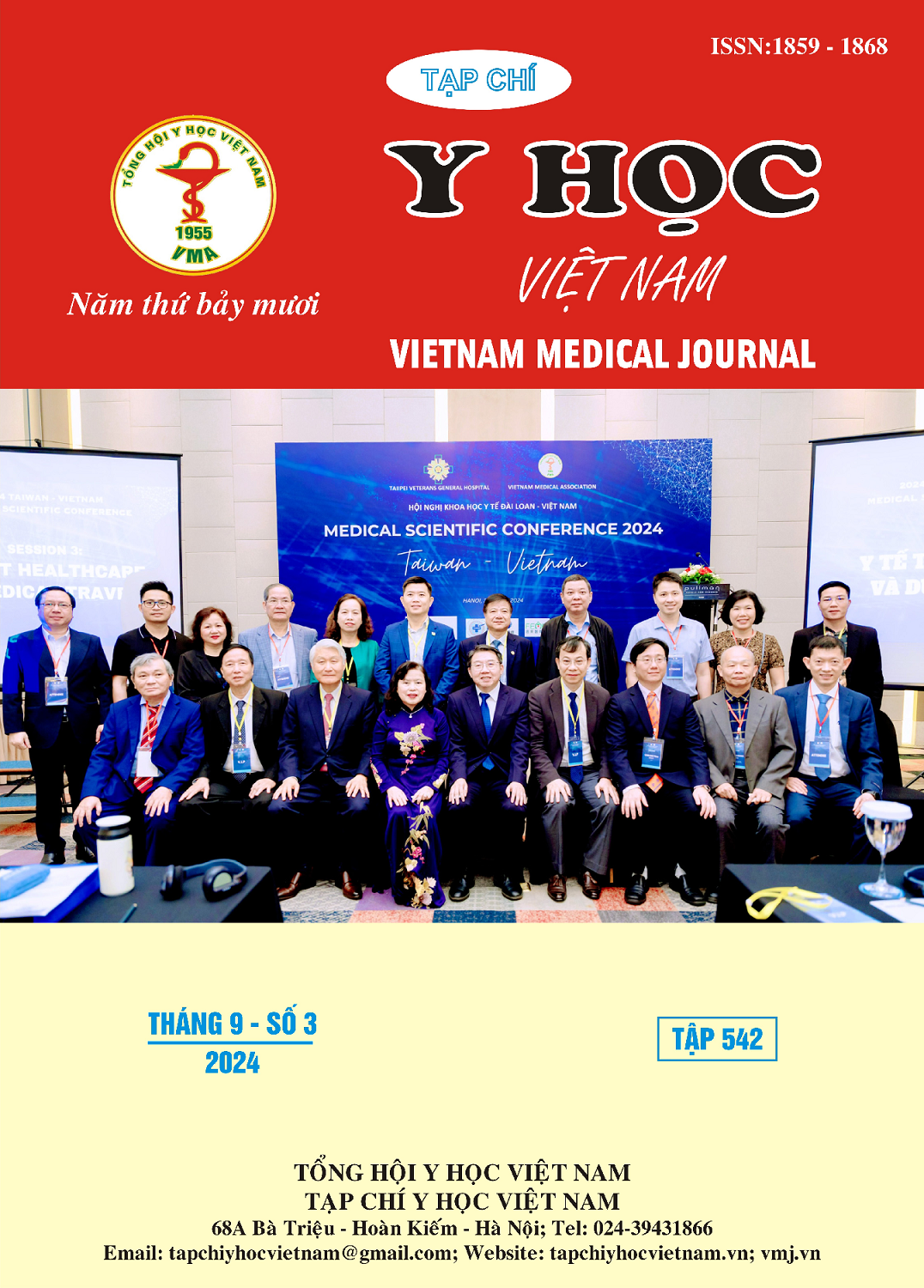EVALUATE COMPLIANCE WITH CARE GUIDELINES AND INVESTIGATE SOME RELATED FACTORS OF PATIENTS AFTER CIRCUMCISION AT THE ANDROLOGY AND SEXUAL MEDICINE DEPARTMENT - HANOI MEDICAL UNIVERSITY HOSPITAL IN 2024
Main Article Content
Abstract
Circumcision is a common surgical procedure with a complication rate ranging from 0% to 10%, typically including bleeding, swelling, cosmetic deformity, and wound infection. Adherence to postoperative procedures and care guidelines is crucial in reducing these complications. A cross-sectional study was conducted to describe adherence to postoperative care guidelines among patients undergoing circumcision at the Department of Andrology and Sexology - Hanoi Medical University Hospital in 2024, and to explore factors associated with patient adherence. A total of 136 patients completed the questionnaire. Results showed the average age of participants was 29.3 ± 9.5 years, with the youngest being 15 years old and the oldest 60 years old. Patients self-assessed their adherence to postoperative care guidelines, with 86% meeting the criteria. Marital status and cohabitation were significantly associated factors (P < 0.05) with adherence to postoperative care guidelines. Patients who underwent circumcision for cosmetic reasons demonstrated higher adherence compared to those diagnosed with phimosis or balanitis.
Article Details
Keywords
adherence, care instructions, influencing factors, circumcision, complications
References
2. Carlaw K, Chia D, Allaway M, Harvey J. Acute ischaemia of the glans penis post-circumcision managed with pentoxifylline, topical nitroglycerin and epidural. BMJ Case Reports [Internet]. 2023 [cited 2024 Jun 15];16(1). Available from: https://www.ncbi.nlm.nih.gov/pmc/articles/PMC9835866/
3. American Academy of Pediatrics Task Force on Circumcision. Male circumcision. Pediatrics. 2012 Sep;130(3):e756-785.
4. Morris BJ, Katelaris A, Blumenthal NJ, Hajoona M, Sheen AC, Schrieber L, et al. Evidence-based circumcision policy for Australia. Journal of men’s health [Internet]. 2022 [cited 2024 Jun 6];18(6). Available from: https:// www.ncbi.nlm.nih.gov/pmc/articles/PMC9409339/
5. Zulu R, Jones D, Chitalu N, Cook R, Weiss S. Sexual Satisfaction, Performance, and Partner Response Following Voluntary Medical Male Circumcision in Zambia: The Spear and Shield Project. Glob Health Sci Pract. 2015 Dec 15;3(4):606–18.
6. Ma Q, Fang L, Yin WQ, Ma JW, Wu KR, Yan ZJ, et al. Chinese Shang Ring Male Circumcision: A Review. Urol Int. 2018;100(2):127–33.
7. Ma Q, Fang L, Yin W qi, Ma J wei, Wu K rong, Yan Z jun, et al. Chinese Shang Ring Male Circumcision: A Review. Urologia Internationalis. 2017 Mar 10;100(2):127–33.
8. Thảo TTP. Thiết kế và sử dụng Rubrics làm công cụ đánh giá trong quá trình dạy học Toán ở trường trung học phổ thông.
9. Richters J, Smith AMA, de Visser RO, Grulich AE, Rissel CE. Circumcision in Australia: prevalence and effects on sexual health. Int J STD AIDS. 2006 Aug;17(8):547–54.
10. Asa GA, Fauk NK, Ward PR. Traditional male circumcision and the risk for HIV transmission among men: a systematic review. BMJ Open. 2023 May 18;13(5):e072118.


